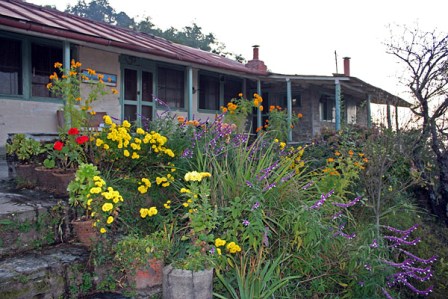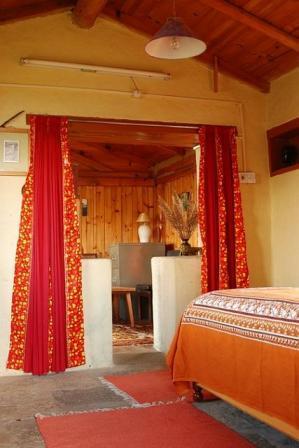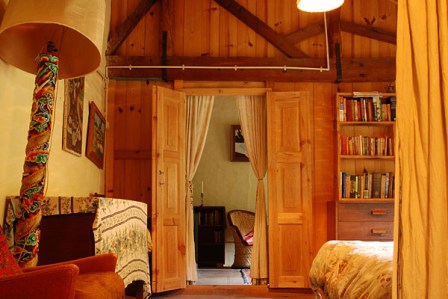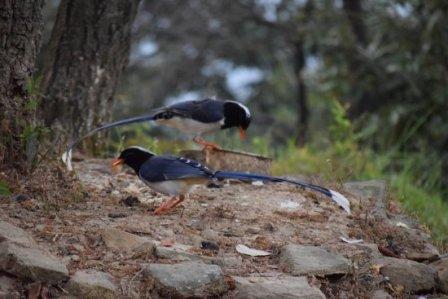JILLING
Jilling Estate is about 300 km from New Delhi in India and at a height of 7000 ft in a lesser known, beautiful part of the Kumaon Himalayas. Jilling is a very lesser known small village in the Kumaon region of India. To reach Jilling one needs to avail the route from Katgodam through Bhimtal and Matial. The route from Bhimtal to Matial is by car, after that the car route ends. From Matial to Jiling the route is of 2.5 km and is of light uphill trekking route. While trekking up-to Jilling in some places there are few tough uphill route. The owner of the homestays at Jilling arranges horse and potter if they are informed before the journey. At Jilling you will see jungles all over. Though Jilling is not actually a forest or a jungle from the beginning, but its characteristics is very interesting and its history is very awkward. During the time of the British rule in India, Jilling was once the property of few English people, who used the land to cultivate Apple and Apricot, which was spread over few acres. In those days the apples that grows here at Jilling Estate was exported to Lahore. In independent India, when the British people leave away the region, those weeds and wasted estate came under the Indian Government. There are few cottages and bungalows at Jilling those are built between the years 1920 – 1930. But in the year 1962 a British named Stephen, sold the property to a native Indian of that region. From the early morning itself Jilling blossom up to its fullest with the chirping sounds of numerous Himalayan birds, some of the species may include Sunbird, Woodpecker, Tit, Nighthatch, Magpie, Warbler, Hill Patridge, Streaked Laughing Thrush, Rufous Sibia, Blue Whistling Thrush, Rusty Checked Scimitar Babbler, White Crested Laughing Thrush, Grey Headed Tripai, Black Headed Jay, Raset Sparrow, Flower Pecker, Grey Winged Blackbird. Not only these varieties of bird’s species but also numerous floras which may include Oak, Pine, Rhododendrons, Maple and many more. Everywhere you will get to see numerous wild flowers those blossom up at Jilling. Jilling is one of its kinds of region in the Kumaon Hills, where one can enjoy the calm nature along with chirping sounds of birds and colour of wild flowers.
Once you reach Katgodam station, you will get to see the main structure of the station is of British architecture, everywhere the British culture and their heritage still exists here. From Bhimtal to Matial and Jilling on the way you will get to see birds like Red Billed Blue Magpie and Yellow Billed Blue Magpie. Matial is the entry point of Jilling and the last available car route. At Jilling one can see numerous cherry plants. Many other types of birds those are seen at Jilling are Chestnut Billed Nighthatch, Grey Hooded Warbler. From Jilling Nanda Devi Hills is clearly visible on a clear day. From Jiling to the upwards direction through the trekking route Trishul, Nandaghunti, Nandakati and Panchachula all are clearly visible. The locals (mainly the old aged peoples) of the village say the name Jilling derived from a species of plant named Silling. In the year 1962 one of the reputed and known person of the region purchased a land of 45 acre, but in the later days the land slowly stretched and spread upto 120 acres. At Jilling all the vegetables that grow here are organic. Till the year 1980, 13 km route upto Jilling was traveled by foot. But now from Matial to a distance of 1 km at Padmapuri there are local markets, banks, hospital, and post office has been established. At Jilling there are only 17 to 18 families those lives here. The main source of livelihood of the locals is mainly farming and cultivation, few are in the Indian Army and few are engaged in looking after these estates. Though Jilling is mainly a bird watchers paradise, but the natural view of the village attracts the tourists more. To a few distances at Jilling, there is a bungalow of an English couple, but now no one lives there, they gifted the property to a well known local of the village. At Jilling one can get see to a tree, though very lesser in number, its leaves are of light green, dark green and yellow colour and very well decorated, these trees are known as European Oak. Few Rufous Sibia are also seen here. From there to a few steps ahead there is a modern house of a retired German Diplomat, who spends most of the time of the year at Jilling. The locals of Jilling used to store rain water in large tanks and purify that water for their own use. If one is lucky enough they can see leopard or Kaliz Phesant at Jilling. On return journey from Jilling, there is a short route through the jungles, the route is little wide and one side of the route is dense forest. On the way there is a small hut, where many species of birds visits to collect food, these species includes Rusty Checked Scimitar Babbler, White crested Laughing Thrush, Grey Headed Tripai, Black Headed Jay, apart from these wide varieties of sparrows those includes Ruset Sparrow, the male is of reddish brown colour. Also you will get to see Grey Winged Blackbird.
Few Things to Know About Jilling:
Those who are absolute bird watchers and loves photography on birding or likes to spend two or three days within the silence of nature, for them Jiling is an ideal option. If anyone is keen to avail the trekking route and likes to have the taste of warmth of Kumaon villager, then on your Kumaon visit one or two days is must at Jiling. Full of Oak, Rhododendron, and Pine those speeded all over and if anyone if anyone is lucky enough, they may catch a glimpse of Leopard, Jungle Cat and Barking Deer.
How to Reach:
By train upto Katgodam or Lalkua. From there upto Matial via Bhimtal by car. From Katgodam about 35 to 40 minutes is Matial and from Lalkua upto Matial is of 2.5 km route. From Matial either by trekking or on the back of Poni upto Jiling. From Delhi cars are available upto Matial.
Things to do at Jilling:
At Jilling one can village walking and enjoy village trail. One can also enjoy bird watching and photography is one of the great activity one can enjoy during their stay at Jilling. Apart from the above mentioned activities trekking and mountain climbing is worth enjoying. One can also enjoy their day looking for different types of herbs and floras those are available at Jilling. Bird watching and knowing about species is another activity one can also enjoy during their stay at Jilling.
Best Time to Visit:
The best time to visit is April – Mat – June and October – November – December are the accurate timing. It is better to avoid the monsoon. As because during the monsoon there are chances of land slides are possible.



JILLING ESTATE
Jilling Estate is one of the very few accommodations available in this small hilltop. The resort has only 4 cottages for the accommodation of the guests those visits the place.
HOW TO BOOK: Call us at 9831311606 , 9830381306, 9830619422, 9831208172 to get the current availability status or use the query form furnished below with all you travel queries and submit, we will call/ contact you directly.
Or, you may also directly book from our Kolkata office at: 8C Shanti Ghosh Street, Kolkata – 700003. Nearest Landmark: Manindra Chandra College and Shyambazar Metro Railway Station (Gate No: 3)



